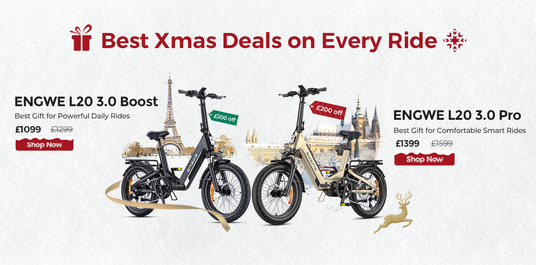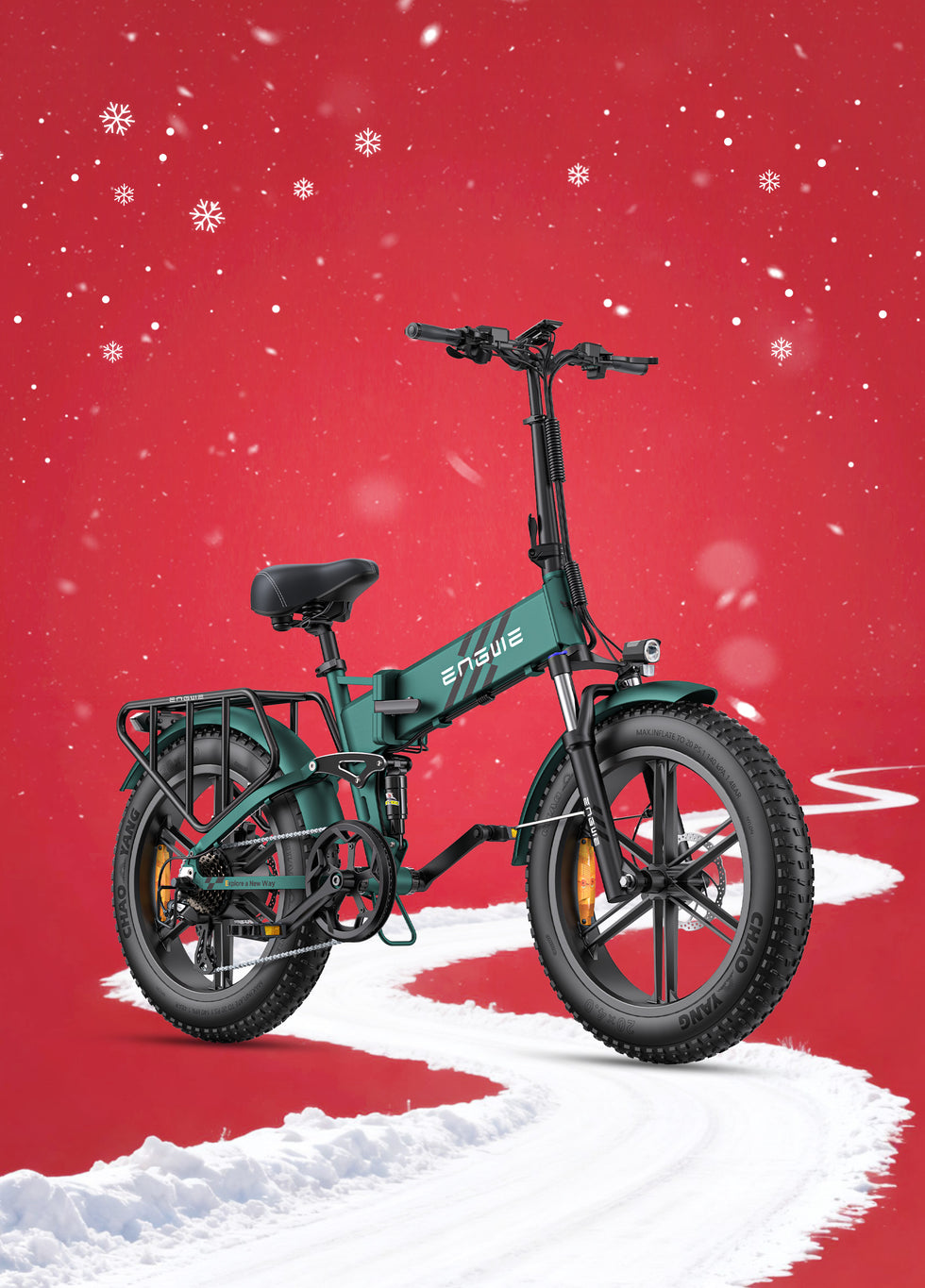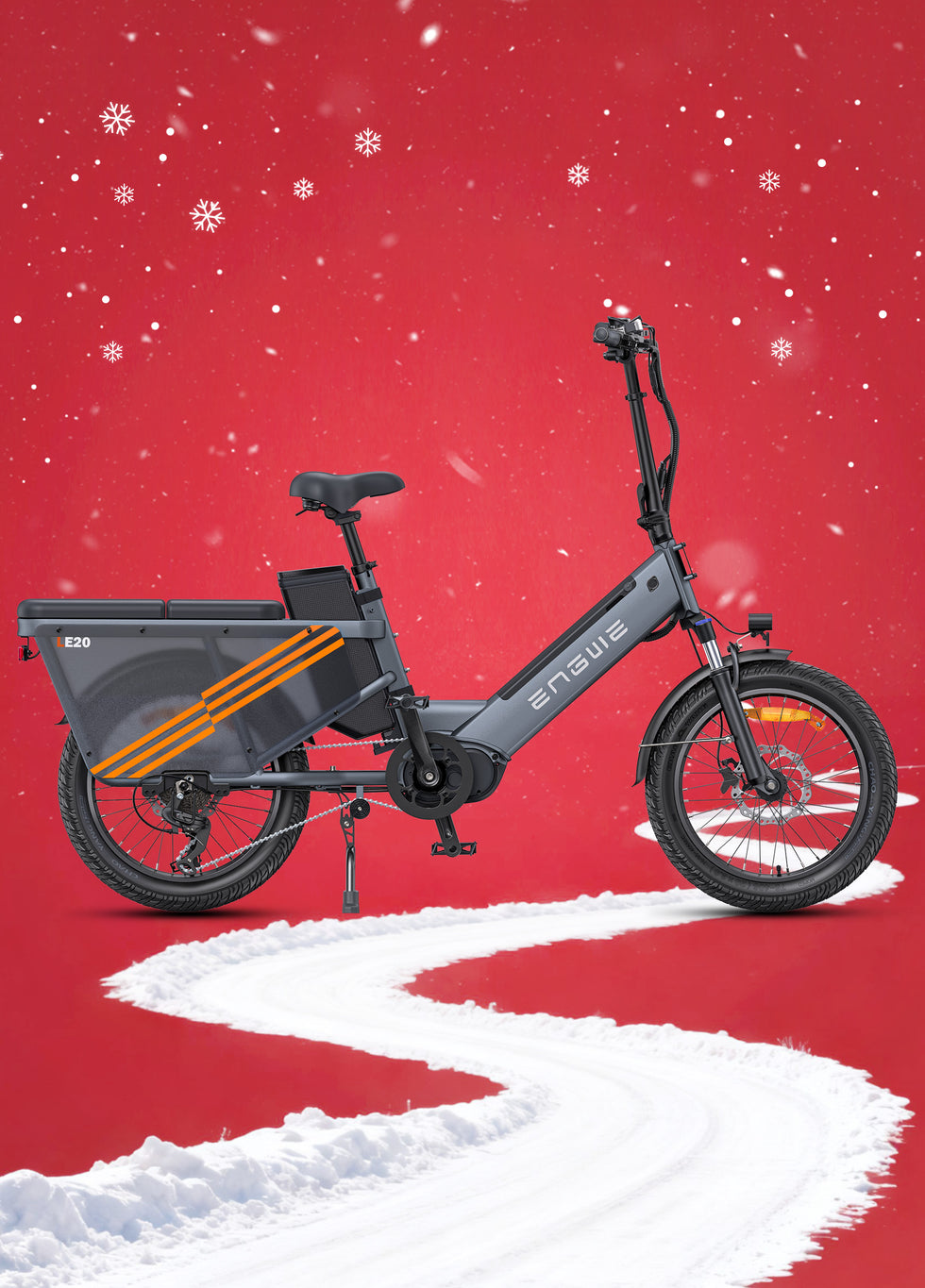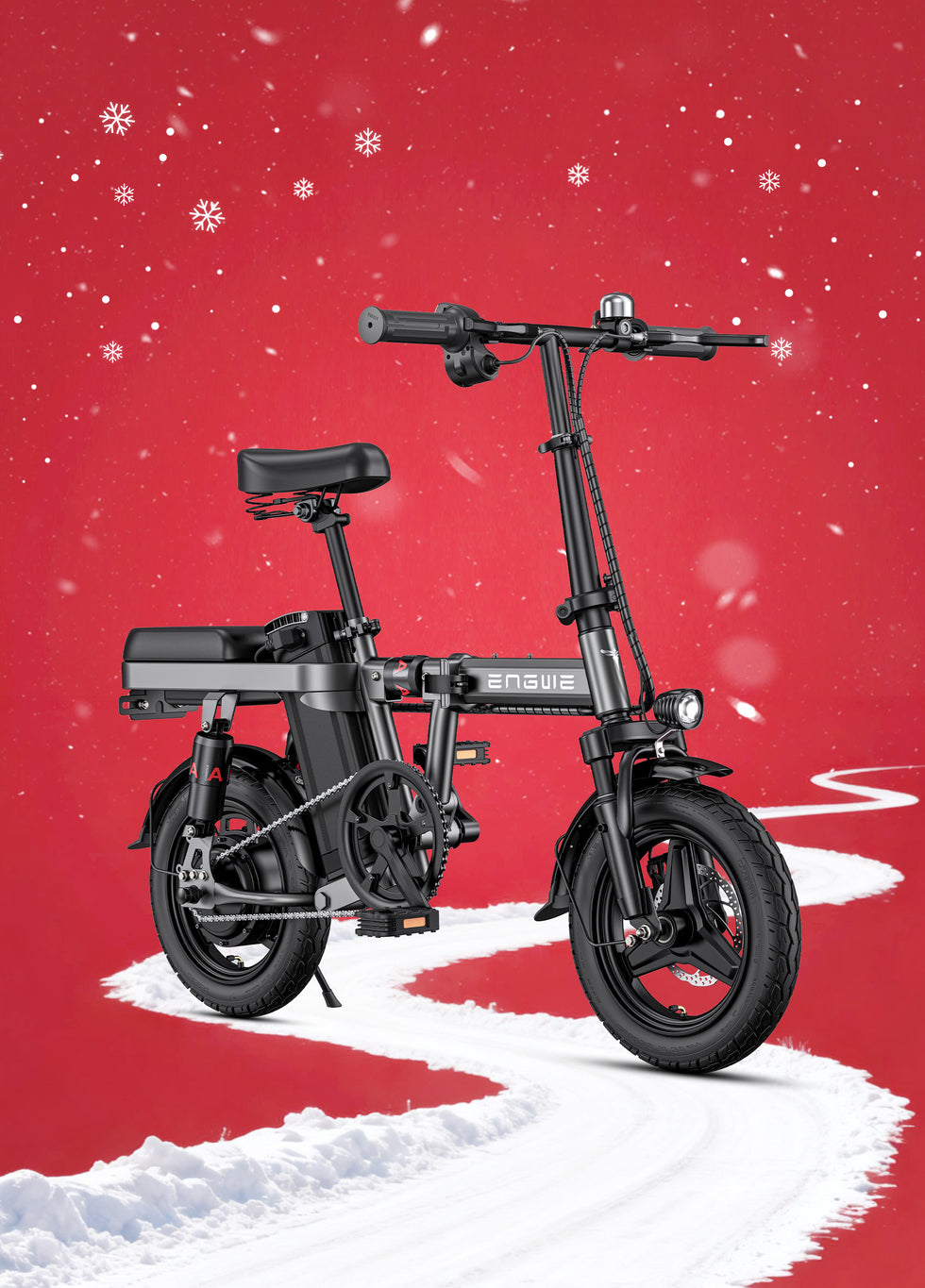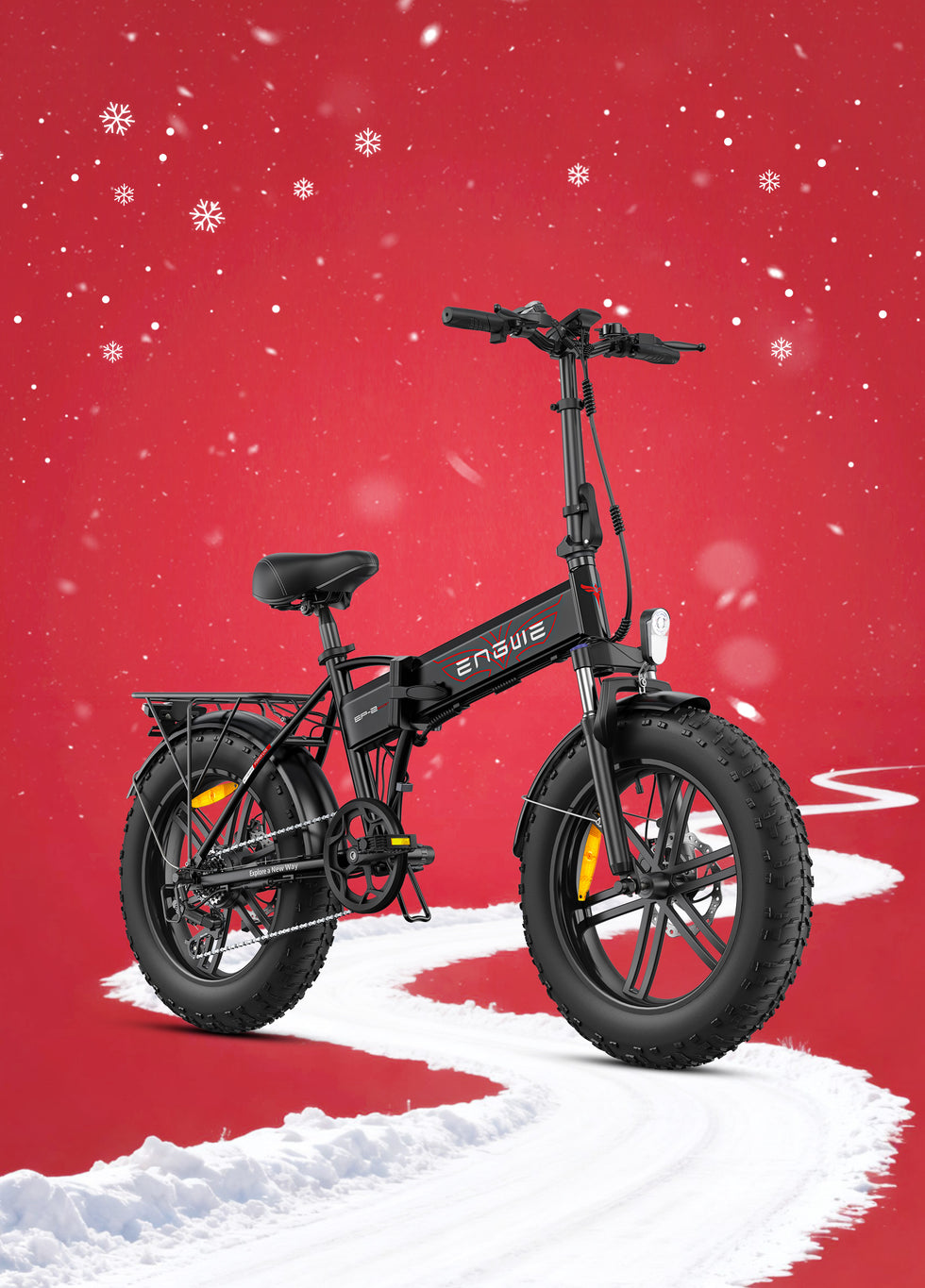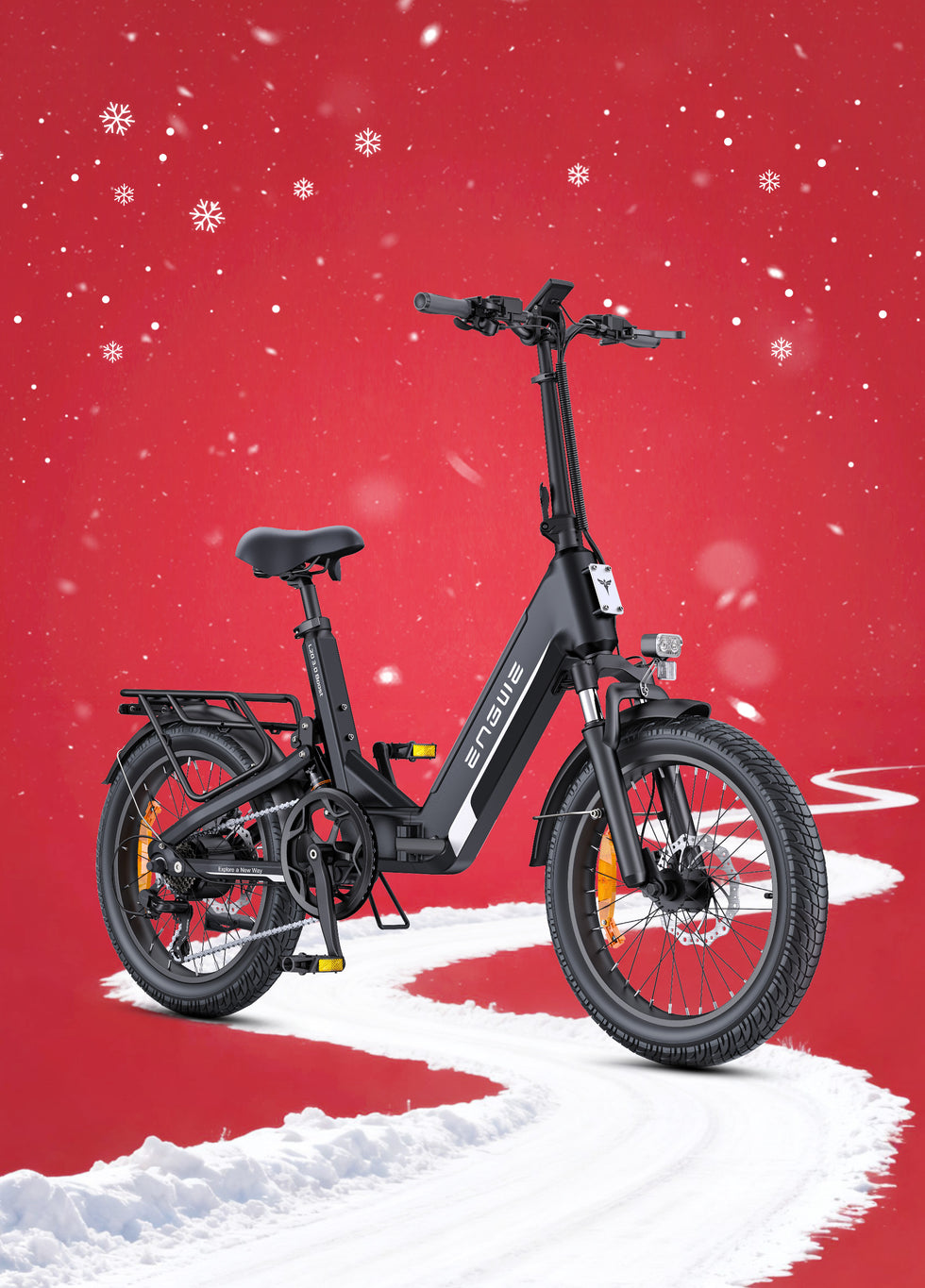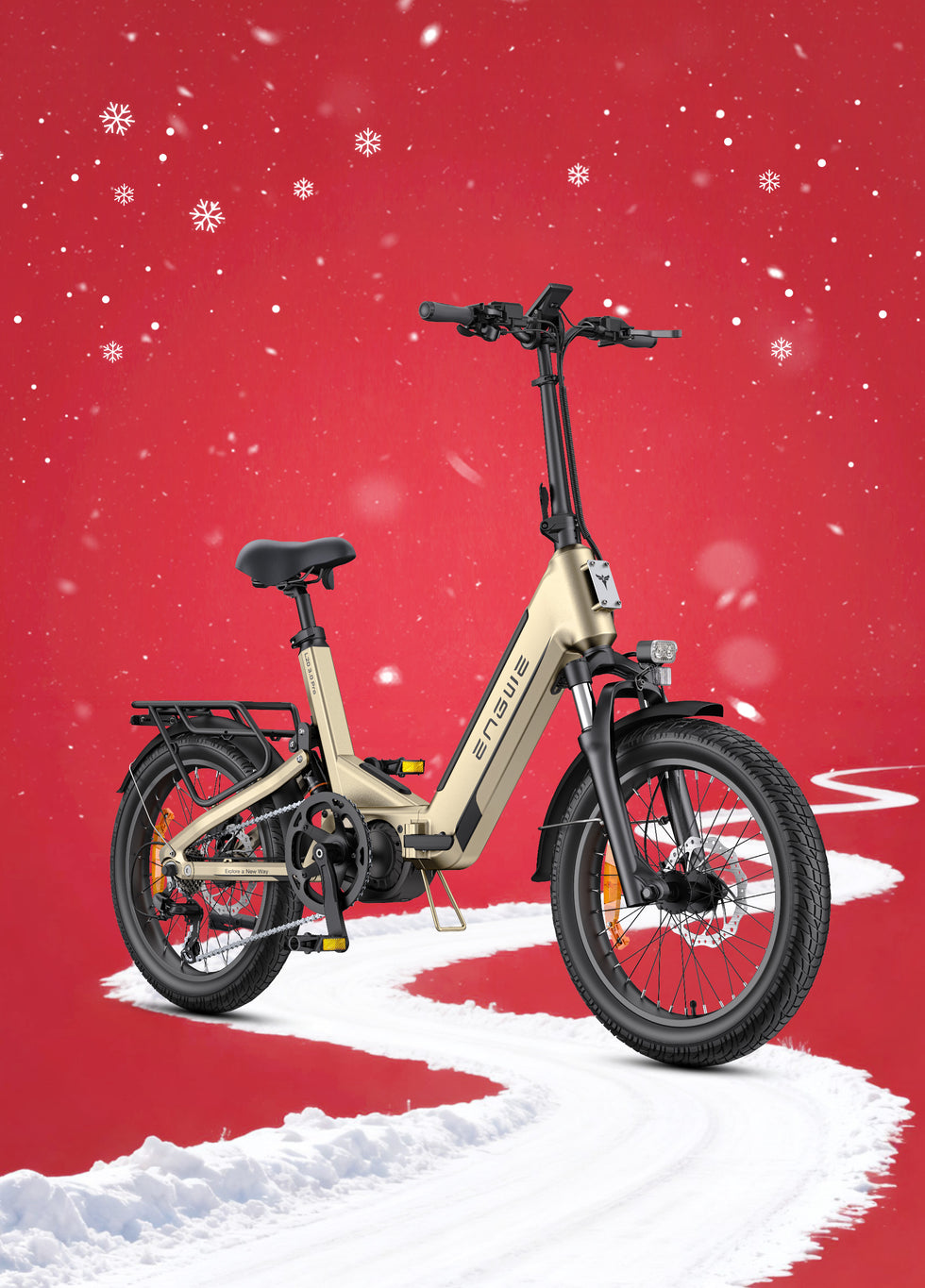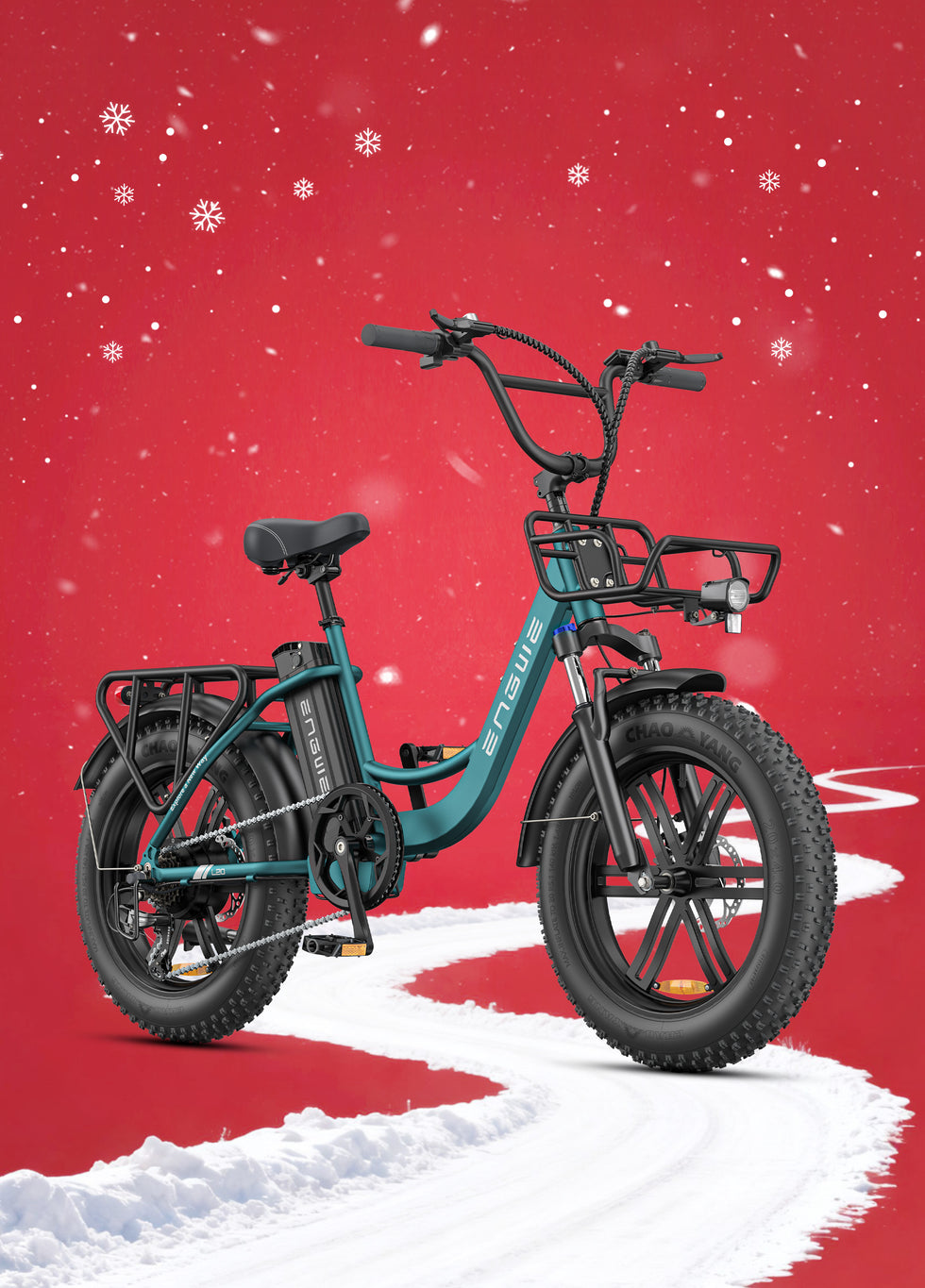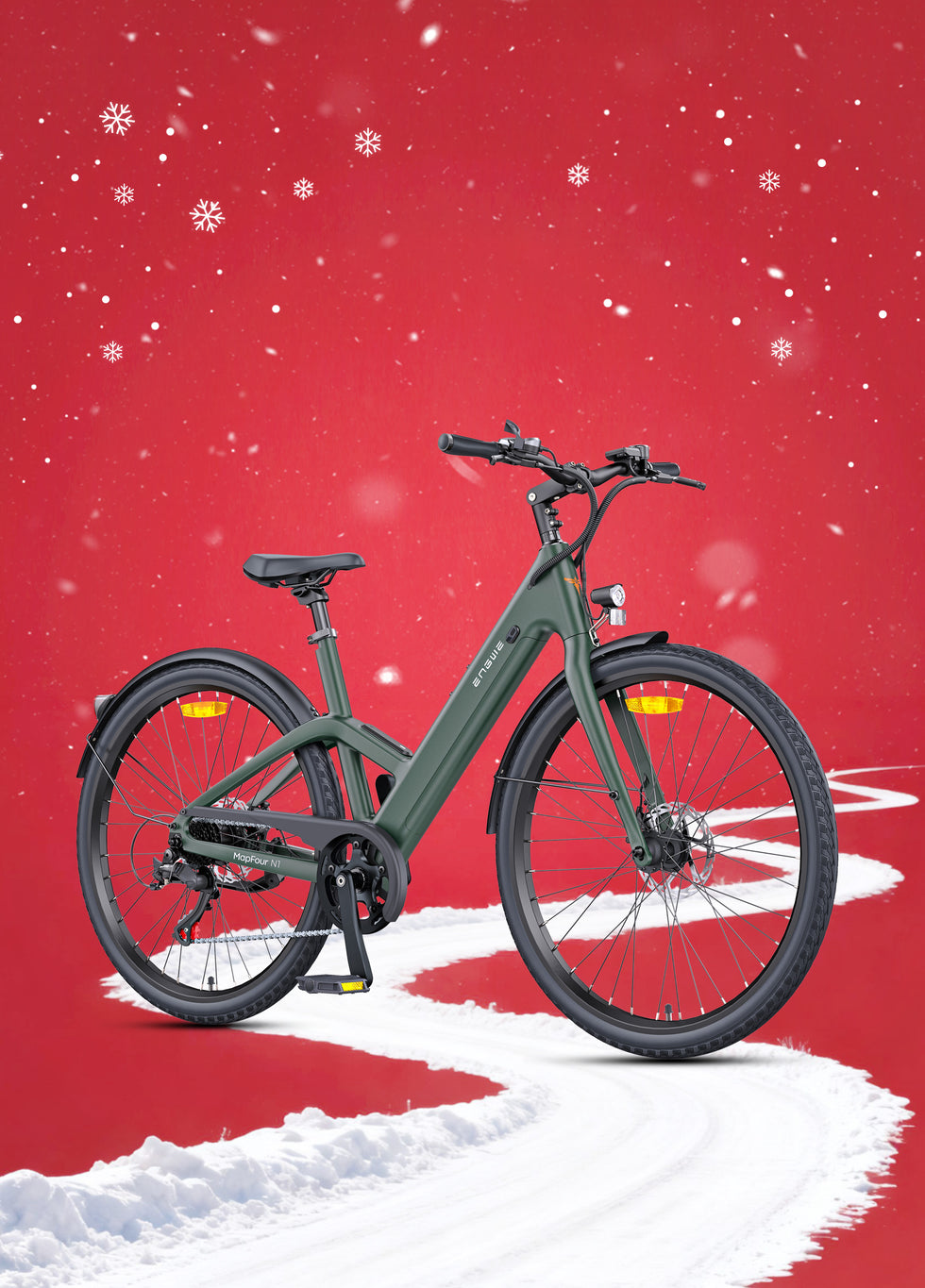The daily commute, For too many of us, it is a gridlocked, gauntlet-filled ordeal with mass traffic and sardined subways, subjecting us to at least an hour each day just to get there — barring any mix-up or outage. But what if you changed that morning into a pleasant, inexpensive, and relaxing aspect of your day? Enter the commuter ebike, which has revolutionized a method of transportation, helping to transform city travel. This is not merely to go from point A to B; it is to reclaim your time, be healthy, and be environmentally friendly. This all-encompassing guide will step you through the process of finding the ideal electric commuter bike for your way of life. So if you're sick of the same old routine and thinking about a new way to travel, read on!
What is a Commuter Ebike?
An electric bicycle, or ebike, is basically a regular bicycle with an integrated electric motor and battery to help with pedalling. Not all ebikes are created equal, though. A commuter ebike is a type of electric bike made for the rigors of everyday transportation in urban areas.
While terrain-adapted mountain ebikes are suitable for all-terrain conditions, and ultra-lightweight road bikes manage exceptional range, the electric commuter bike aims for practicality, comfort, and efficiency. It adopts a philosophy that is all about making your everyday journey a little smoother. Key characteristics typically include:
Comfortable geometry:
A bike with comfortable geometry will often position you more upright, causing less strain on your back and neck and providing a smoother, more convenient ride than the hunched-forward racer's posture of a racing bike.
Integrated Accessories:
A commuter ebike is a real-world-ready machine that typically includes items such as full-length front and rear mudguards (fenders) to ensure you remain clean in the wet, a pannier rack for carting laptops and shopping with ease, integrated lights to help you be seen after dark, and a kickstand which makes life so much easier.
Efficiency & Reliability:
The motors and batteries are tuned to work in the most efficient way over normal commuting distances. It is built to be sturdy, with very little maintenance required, hence safe for everyday use.
Road-Legal Compliance:
Reputable commuter ebikes adhere to the rules of your country or region (in the UK and EU, this is 250W continuous power with electric assistance limited to 25 km/h). This makes them legal to ride in the same places as a standard bicycle, without needing a license or registration.
In other words, a commuter ebike is like having your cake and eating it too — you get all the fun cycling has to offer but with an electric boost that allows you to get up hills easier and ride faster for longer without breaking a sweat.
The True Advantages of Commuting by Electric Bike
More than just a trend, the appeal of ebikes for day-to-day use is substantial, improving your quality of life in terms of finances and health.
Great Financial Savings:
An ebike pays for itself. Consider that initial expense against daily fuel prices, parking, or a monthly public transport pass. It costs around 20p per charge to run an ebike. Over a year, this can accumulate to thousands of pounds saved.
Health and Fitness:
You still pedal (albeit with assistance from the motor). This is a form of low-impact cardiovascular exercise that can be incorporated into most daily routines. You start moving and breathing fresh outdoor air. On top of that, sailing past all the stationary traffic rather than being a part of it takes commuting stress levels from high to zero and allows you to arrive at work fresh and focused.
A Greener Alternative:
Arguably one of the most significant changes an individual can make for the planet is ditching a car in favor of an ebike. As a pure battery-electric vehicle, it gives off no tailpipe emissions, lowering air pollution in your town. It attracts negligible costs while charging, rendering it a genuinely sustainable transportation alternative.
Faster, Predictable Journeys:
Ebikes offer faster, more predictable journeys, something many may not find with other forms of transport in congested urban areas. You get to sprint through traffic on bike lanes, and your travel time becomes more consistent. With the help of electric assist, hills no longer slow you down and headwinds are virtually nothing to worry about—which means that you can roll through at a fairly steady average speed without breaking a sweat.
Unmatched Freedom:
An ebike grants you access to more of your city than ever before. Find new paths, make a few stops on the way back to buy some groceries, and even drive cleanly through traffic without worrying about parking.

How to Pick the Best Commuter Ebike for Your Money
When choosing an ebike, it can be difficult to decide which one is right for you with all the tech speak. The fundamental details that need to be parsed down are these:
Motor and Sensor Type:
Motor: The vast majority of commuter ebikes come with a 250W motor to comply with the law. The main difference is whether it is a hub motor (in the front or back wheel) or a mid-drive motor (centered on the bike frame at the pedals). Hub motors tend to be cheaper and lower maintenance; mid-drive motors give a more naturalistic, even feel and perform better in very hilly terrain.
Sensor: This is crucial. A basic cadence sensor operates the motor as soon as you start pedaling. A torque sensor is more sophisticated and reacts to how hard you pedal, giving you more assistance the harder you push. As a consequence, it is more responsive and better adapted to the rider, which creates greater control in all types of riding conditions, making an e-bike feel like an extension of your own power. If you're looking for that premium ride feel when commuting, a torque sensor is well worth it.
Battery and Range:
Battery capacity is measured in Amp-hours (Ah) and Voltage (V). The higher the number, usually the longer the range. The specified range (for example, 100 km) is typically a best-case scenario: flat terrain, lowest assist level, and below-average rider weight. Think about how far you normally commute and what the topography is.
Any model with a non-removable battery is not worthy of your choice. The ability to bring the battery inside to charge at your work or from any power socket is a huge convenience, so you don't have to park the entire bike next to an electrical plug.
Frame and Comfort:
Frame Style: A step-thru frame (with a low or no top tube) makes getting on and off super easy and is suited for a town-riding lifestyle with more stops. A step-over frameset (or crossbar) may be more rigid but obligates you to swing your leg over.
Seat position: You want a bike with a comfortable, upright seat position. The best part is an adjustable stem that lets you raise and lower the handlebars to match your body, eliminating back and shoulder pain.
Suspension: A suspension fork in the front or a suspension seatpost can take the edge off many potholes and rough surfaces, making for a more pleasant ride.
Brakes:
Your life depends on your brakes. For a commuter ebike, hydraulic disc brakes are the best-case scenario. These deliver vastly improved stopping power, reliability, and feel over rim brakes or mechanical disc brakes, particularly in damp conditions. They inspire the necessary confidence to negotiate city traffic safely.
Practical Features:
Don't overlook the built-in extras. A bike equipped with a robust rack, full-length mudguards, a chain guard to keep your trousers clean, and battery-powered lights will save you time and money on essential accessories.
Navigating the Rules: Ebike Legality and Maintenance
Do commuter ebikes have legalities and rules?
In the UK and throughout the EU, commuter ebikes that meet certain requirements are legal and are classed as bicycles. The official term for such bikes is "Electrically Assisted Pedal Cycles" (EAPCs). The key rules to be classed as an EAPC are:
The bike has to be propelled by pedalling. The electric motor is to be used to support your pedalling, not to power the bike without you putting some effort in (with a few exceptions like 'walk assist' modes).
The motor cannot have a continuous power output of over 250 watts.
Electric assistance must cease at 25 km/h (15.5 mph).
Provided the ebike abides by these regulations, you do not require a license, it does not need to be registered or taxed, and it is perfectly legal to ride on roads and cycleways. If you see ebikes that don't meet these standards (e.g., with overpowered motors or throttles that work above 25 km/h), they are legally considered speed-pedelecs or mopeds and are subject to different rules.
Where should I start with maintenance/upkeep?
You just have to be a touch more careful with an ebike than you do with a standard bike, but it's really not much work at all.
Tire pressure and brake check: Make sure to maintain proper tire pressure before each ride and check that your brakes are working correctly. A well-maintained bike is a safe bike.
Chain Care: You must clean and lubricate the chain. A clean, well-lubricated drivetrain reduces noise and friction, making you faster and prolonging the life of your parts.
Battery Health: The biggest thing is to not let your battery stay completely empty or fully charged for long periods. The sweet spot for storage is a charge of 40-80%. Keep that battery dry. If treated well, most modern lithium-ion batteries will give you years of service.
Cleaning: Clean your ebike, especially the areas near the battery and electrical contact points. Use a gentle spray or a bucket and sponge, NOT high-pressure jet washers, which can force water into delicate electricals.
Get It Professionally Serviced: Similar to your car, it's a good idea to have your ebike professionally serviced once a year to check the motor, electrical system, and all mechanical parts.

Putting It All Together: Top Picks and Pro-Tips
Which top brands and models to look for?
It's a big ebike market out there, with everything from mega-brand Europeans to fledgling direct-to-consumer options. If you are searching for a bike that combines modern style with hyper-functional improvements, it is worth mentioning specific entries within this commuter classification.
Engwe P275 SE: The Ultimate Commuter Star of the Show
One model that stands out as a quintessential 21st-century electric commuter bike is the Engwe P275 SE. It has been carefully designed to meet the fundamental needs of a daily commuter. It is a road-legal machine at its heart, from the 250W brushless motor to the intelligent Torque Sensor. With a response time of only 50 milliseconds, this sophisticated system provides as much power as you give it, making the assistance feel smooth and natural. Featuring Engwe's E-SATS AI algorithm, this provides a pedal assist that is more dynamic and practical compared to basic cadence-sensor systems.
And the P275 SE is practical in spades. A high-capacity 36V 13Ah lithium-ion battery is discreetly housed within the 6061 Aluminium Alloy frame and can be removed in seconds for easy charging away from the bike. The powerful cells will hold a solid 100 km range on a single charge, which for most of us means commuting to work and back over the week without ever thinking about recharging. As for rider comfort, they took care of that through a Dutch-style upright design, an adjustable handlebar stem, an ergonomic saddle, and a swallow handlebar for easy control. Safety is key, with 160mm front and rear hydraulic disc brakes offering strong stopping performance in all conditions. Efficiency comes with cushion, too: 27.5*2.4 city tires support a plush ride. It also has basic urban commuting requirements such as a chain guard and an IP54 waterproof rating. A bright LCD color display manages control and information. Paired with a 9-speed Shimano transmission, the Engwe P275 Pro is a super high-tech and comfortable solution for fast urban commuting.

How to Have a Better Ebike Commute
If you have an ebike, just follow a few rules and your daily ride will be even better.
Safety First: ALWAYS WEAR A HELMET. Ensure your integrated lights are always on, even during the day, and consider wearing bright or high-visibility clothing, especially in urban traffic.
Plan Your Route: Find a cycling app that will help you use dedicated bike lanes and quieter back streets for your route. It is often a nicer and safer ride than using main roads.
You're in Charge: Learn to use the different levels of pedal assist. When riding on flat ground, you can use lower levels to save battery and still get exercise, then bump it up a level or two when going up hills.
Pay Heed to Security: Ebikes can be a significant investment. Buy a good, strong lock—or two. Focus on top-flight D-locks or heavy-duty chains, and learn how to lock up your bike correctly.
Choose Your Luggage Wisely: A pannier on your rear rack is much more comfortable than a heavy backpack. This gives the bike a lower center of gravity, helping it feel stable, while also meaning you are less likely to arrive at work with a sweaty back.
When you buy a commuter ebike, you are making an investment not just in something great for the environment, but also something that makes your life easier and happier. No longer does the stress and cost of traditional commuting have to get in your way; it becomes about enjoying the journey. Now you are armed with the knowledge of what to buy—from torque sensors and hydraulic brakes to a removable battery and useful add-ons—you can decide on a bike that will not simply get you to work, but actually change how you experience the daily grind. The future of urban travel is here, and all it needs is you to hop onto your saddle.
